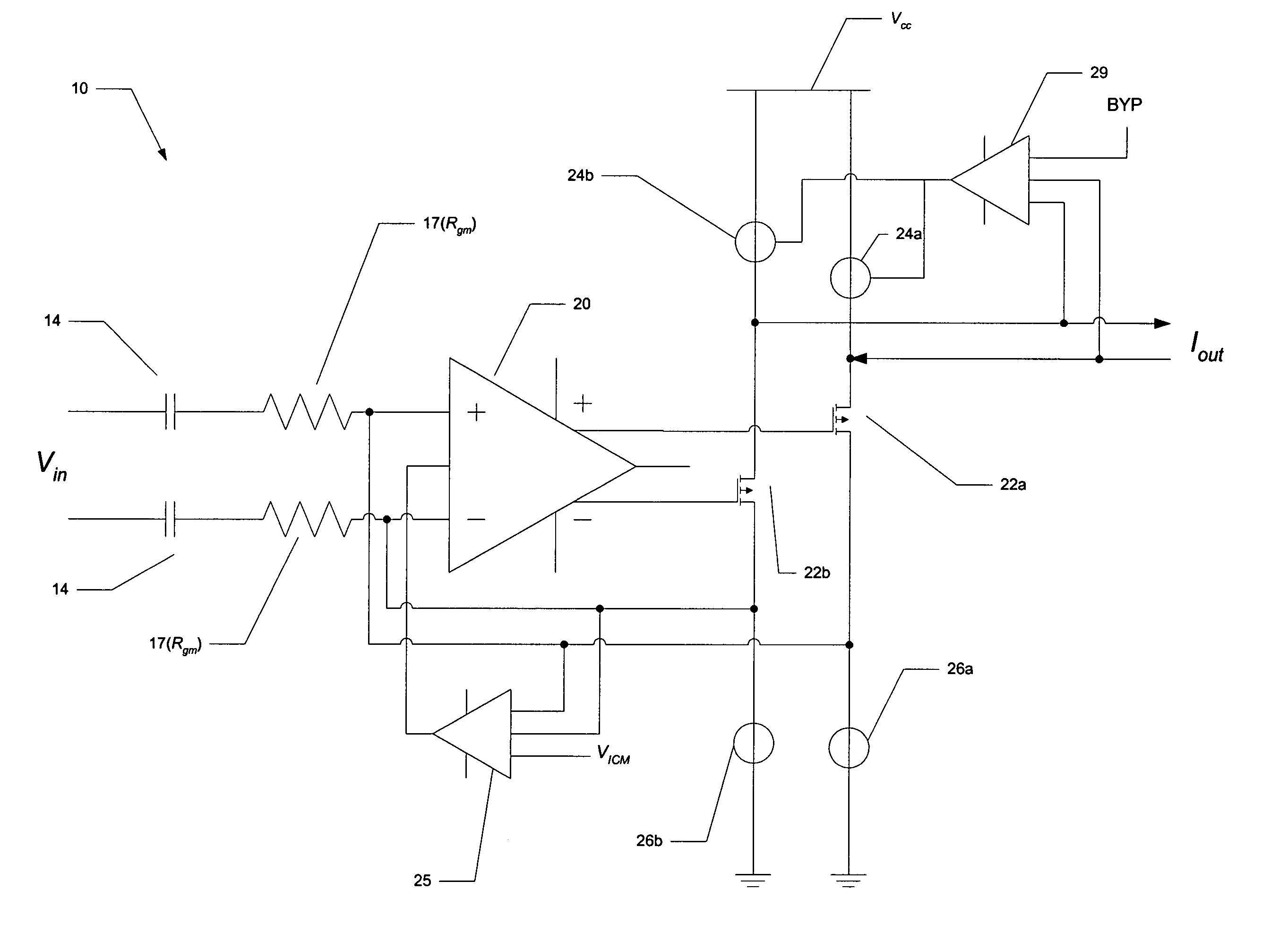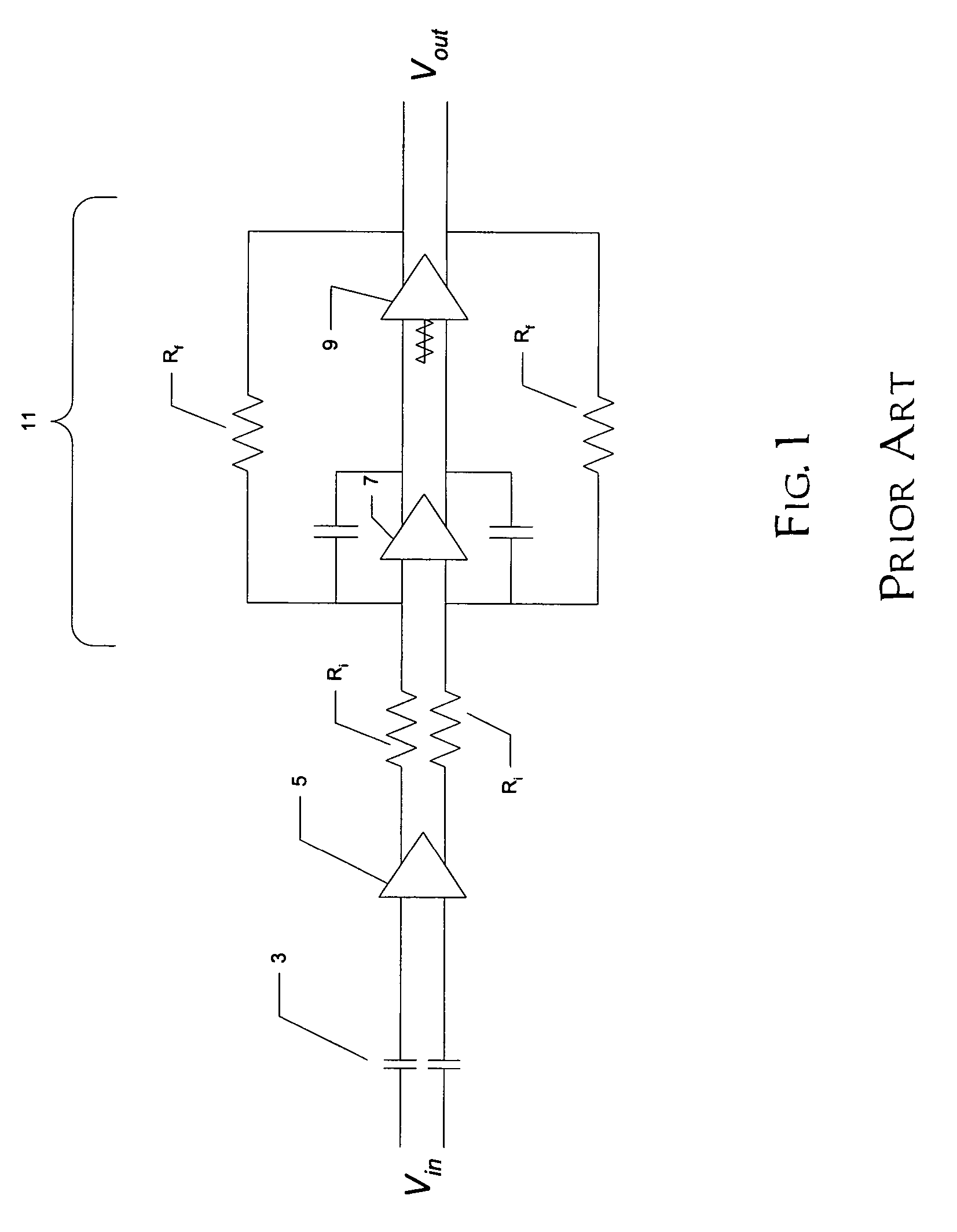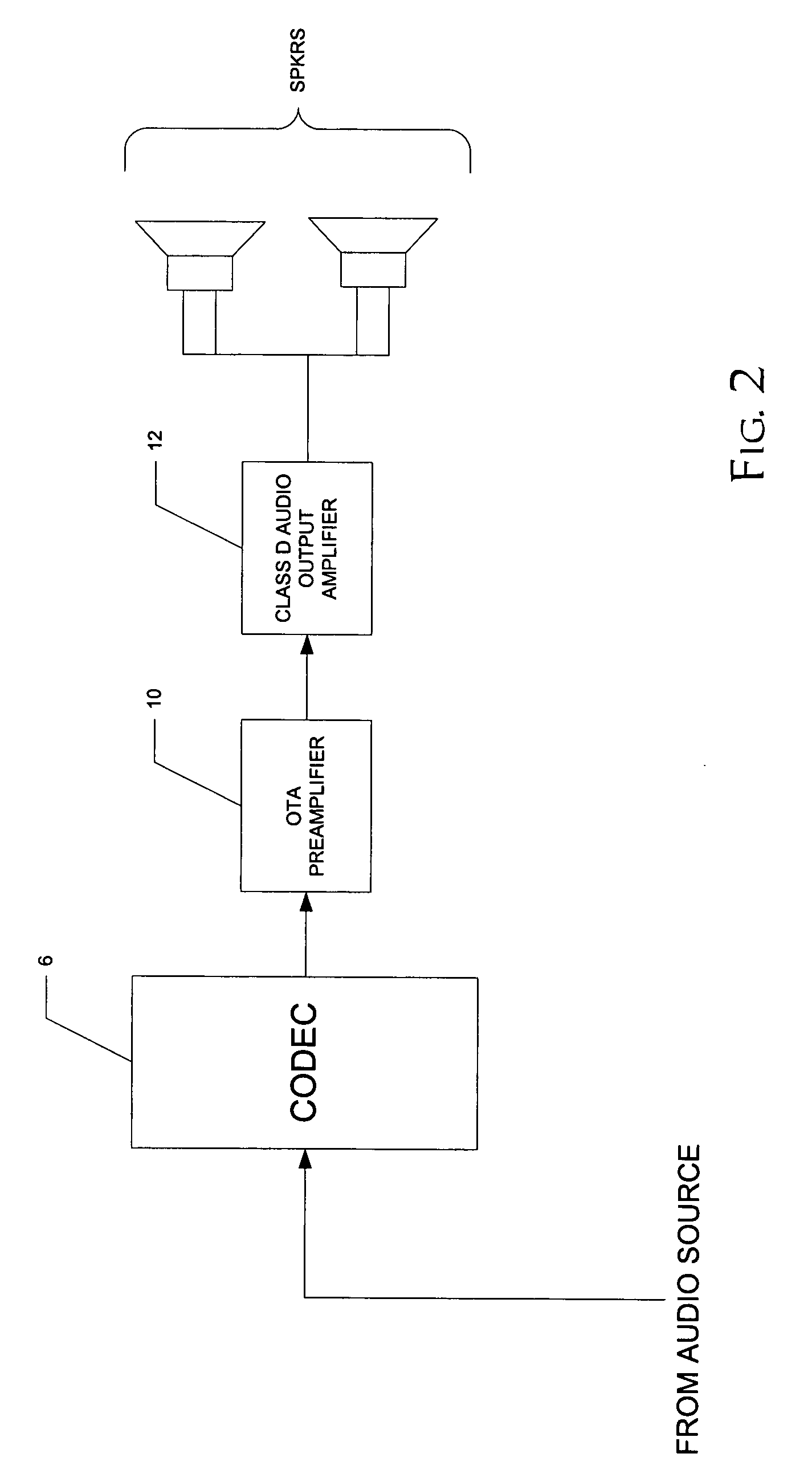Operational transconductance amplifier input driver for class D audio amplifiers
a transconductance amplifier and input driver technology, applied in the field of audio amplifiers, can solve the problems of increasing the bias current at the audio output, boosting any noise and offset voltage, and theoretically less efficient ab amplifiers
- Summary
- Abstract
- Description
- Claims
- Application Information
AI Technical Summary
Benefits of technology
Problems solved by technology
Method used
Image
Examples
Embodiment Construction
[0028]The present invention will be described in connection with its preferred embodiment, namely as implemented into an integrated audio amplifier and preamplifier circuit, in a modern system such as an LCD television. However, it is contemplated that the benefits of this invention may also be attained in other applications, particularly those that are sensitive to amplification of offset voltage and noise. Accordingly, it is to be understood that the following description is provided by way of example only, and is not intended to limit the true scope of this invention as claimed.
[0029]FIG. 2 illustrates an audio system into which preamplifier and audio output amplifier circuitry according to the preferred embodiment of the invention may be implemented. The audio system of FIG. 2 may represent a standalone audio system, such as an automobile, portable, or bookshelf sound system, or alternatively may be implemented within an audio-visual system, such as a television set. It is conte...
PUM
 Login to View More
Login to View More Abstract
Description
Claims
Application Information
 Login to View More
Login to View More - R&D
- Intellectual Property
- Life Sciences
- Materials
- Tech Scout
- Unparalleled Data Quality
- Higher Quality Content
- 60% Fewer Hallucinations
Browse by: Latest US Patents, China's latest patents, Technical Efficacy Thesaurus, Application Domain, Technology Topic, Popular Technical Reports.
© 2025 PatSnap. All rights reserved.Legal|Privacy policy|Modern Slavery Act Transparency Statement|Sitemap|About US| Contact US: help@patsnap.com



